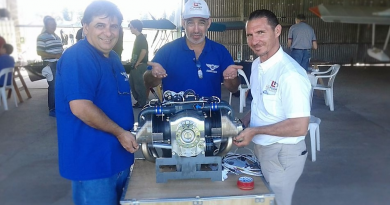Conclusion after accident with the Rans S21 (N468MM): design and material of the ULPower crankshaft is conform.
Preliminary conclusion for the engine failure in the Rans S21 (N468MM).
On May 09, 2023, near Creswell, Oregon a plane immatriculated N468MM, powered by a UL520T flipped over in the field after an engine out. The engine had amassed a total time of about 55 hours. The pilot noted that for the last approximate 20 hours of engine operation, the cylinder head temperature (CHT) in the Nos. 3 and 4 cylinders were high (occasionally the Nos. 2, 4, and 6 cylinders would also be high). In response, the pilot changed to a larger oil cooler and was modifying the cowling to increase airflow.
The accident happened during a series of test flights the pilot was performing after making cowling modifications.
Although the final report from the NTSB has not been completed yet, we do already know that the crankshaft failure did not stem from a material flaw or defect.
The exact cause of the crankshaft failure is still unclear but may have been caused by an unfortunate combination of circumstances. The challenge lies in pinpointing and mitigating potential stress areas, that could have contributed to incidident.
A materials analysis revealed that the crankshaft fracture resulted from fatigue cracks originating at the surface of the aft radius on the No. 2 rod journal, likely due to high operating stresses on the fillet radii. Metallic particles in oil filters suggested continuous wear on bearing shells. Several out-of-range operating parameters,(turbo pressure, fuel pressure, and CHT), coupled with prolonged operation at wide-open throttle (WOT) below operating RPM settings most likely intensified the high operating stress in the crankshaft and as a result fatigue cracks and severe wear of the bearing shells. Torque for the propeller flange was not measured, but the bolt, though not difficult to remove, likely lost preload torque due to the propeller striking the ground.
Conclusion :
The crankshaft failure did not stem from a material flaw or defect. At present, there is no discernible pattern or recurring failures observed in the six-cylinder engine crankshafts.
We are glad to see that the examinations of the NTSB confirmed the conclusion of our tests done for ASTM compliance. The design and material of the ULPower crankshaft is conform the needs of the UL520T engine.
It is however crucial to follow / respect the guidelines in the ULPower manuals
For those considering the UL520T for their project, rest assured that your local ULPower dealer will gladly assist you to comply with the ULP guidelines stated in the manuals.



